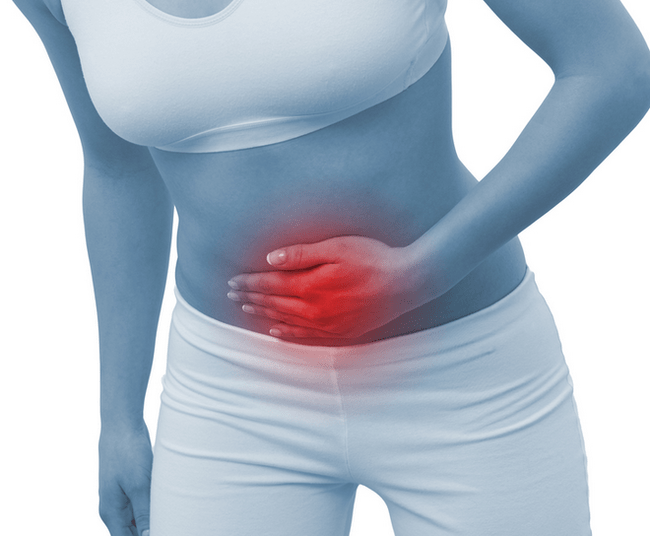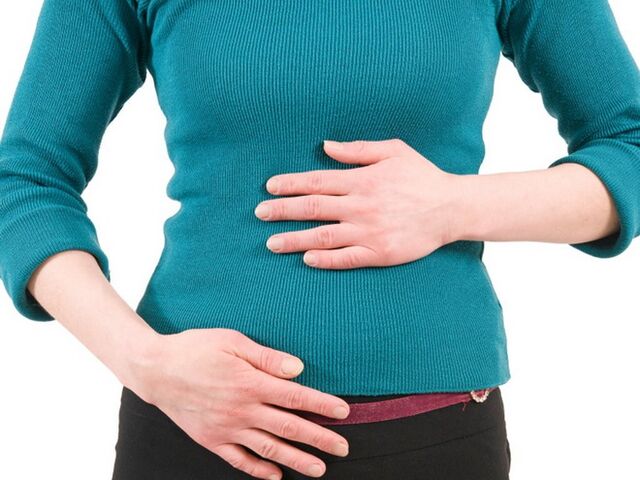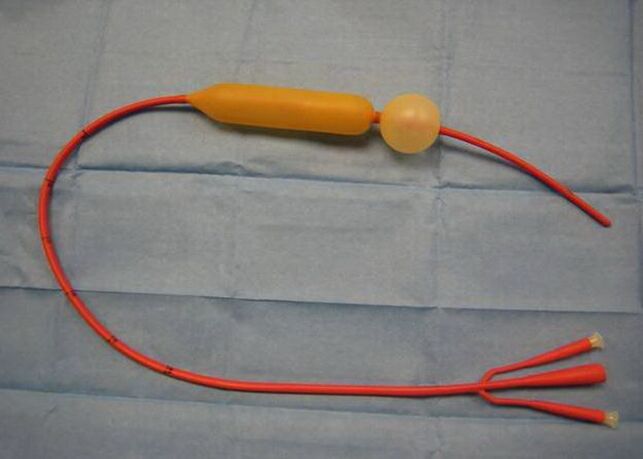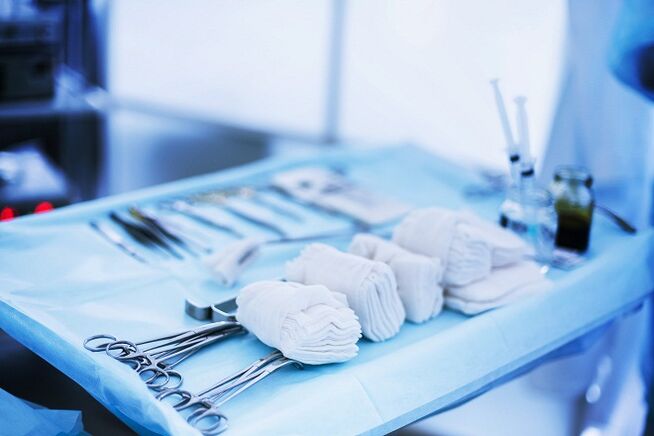Diseases of the blood vessels and large blood vessels are accompanied by significant changes in their physical condition, which negatively affects the quality of the circulatory process. Varicose veins of the esophagus, which can significantly reduce the patient's quality of life due to the deterioration of digestion and blood flow in the body, require careful treatment and timely treatment. This pathology may be accompanied by the addition of secondary lesions of the digestive organs, or may occur and persist independently.
However, with any type of appearance, dilated vessels of the esophagus and subsequent varicose veins are accompanied by unpleasant symptoms, which allows to identify the lesion in the early stages of development and begin a timely therapeutic effect, preventing the development of complications. Medical statistics show that this pathology of the esophageal veins occurs mainly in the male population (women are twice as rarely affected by varicose veins of the esophagus as men), the average age at which the first manifestations of the disease can be noted. 50-55 years old.
Causes of the onset of the disease
The reasons for the appearance of varicose veins of the esophagus may be different depending on the manifestation of the disease, the general condition of the patient's body, in each case the set of causes may be different. But in any case, varicose veins in the vessels of the digestive tract are the result of changes in the general condition of the vessels. The reason for the manifestation of varicose veins of such localization is the excessive pressure in the venous circulation, which is most characteristic of cirrhosis of the liver.
And the result of such an enlargement can be massive bleeding, the danger of which is the lack of symptoms, which can be taken as a warning: bleeding in the esophageal varicose veins is often abundant, which poses a real threat to the general condition. sick. Therefore, knowledge of the manifestations of this pathology of the vessels of the esophagus and measures to prevent the disease will allow it to be diagnosed more quickly and begin an adequate therapeutic effect.
Also, the cause of this pathological change in the vessels of the digestive tract may be the following conditions of the patient:
- obstruction in the portal vein;
- portal thrombosis;
- development of malignant goiter;
- esophageal angioma.
The lesion may also be caused by the symptoms and vascular pathology that accompany Randu-Osler disease. All these diseases and conditions are accompanied by adverse changes in the circulatory system and digestive organs, which primarily affect the general condition of the vessels and large arteries of the esophagus and stomach tissues. Changes in the circulatory system of internal organs, such as the liver, spleen, gallbladder, can lead to the development of varicose changes in the esophagus.
Symptoms of the patient
The main manifestation of a condition such as varicose veins in the esophagus is bleeding. This symptom can be noted in the absence of warning signs on the background of the so-called "complete health". A sign of impending bleeding may be a slight tingling in the throat, a characteristic taste of blood (salty-sour) when swallowed. During the development of varicose veins, the blood that forms during bleeding is usually pronounced a bright red color, resembling a coffee plant. The result of such bleeding, which is often prolonged and profuse, is dizziness, weakness, and loss of consciousness.

Since the causes of varicose veins can be various lesions of the internal organs and the circulatory system as a whole, the overall quality of the work of these organs is determined by both the likelihood of developing varicose veins and the symptoms. it may accompany the lesion.
Symptoms of pathological changes in the digestive tract can be considered as bleeding, which develops in the asymptomatic course of the initial manifestations of the disease. Such bleeding can be both insignificant and high-risk bleeding that does not immediately attract the patient's attention. Varicose veins in the tissues of the esophagus and stomach are most often characterized by the absence of any significant changes that allow for timely detection and treatment. However, this disease is one of the most frightening: a patient with unexpected bleeding, characterized by excessive bleeding, is more likely to die. According to medical statistics, four out of five cases of varicose veins in the digestive tract are fatal.
Types and degrees of varicose veins of the esophagus
Today, experts distinguish several degrees of development of esophageal varicose veins, each of which has its own developmental characteristics, differs in the list of manifestations and requires a certain therapeutic effect, which allows to prevent further aggravation of the pathology. Thanks to modern diagnostic methods, it is possible to determine the presence of the disease, its stage and stage of development.

There are the following degrees of dilation of gastric vessels and varicose veins:
- first degree with a small change in the lumen of the body's blood vessels. Varicose veins of the esophagus, which are characteristic of grade 1, may not be noticed by the patient, because they rarely have definite and obvious symptoms. The vessels of the esophagus have an average lumen of 5 mm, which is not much different from their healthy condition. However, even at this size, they are less elastic, because slight changes in the lumen lead to a slight decrease in the intensity of blood flow through them, and the overall quality of blood circulation in the affected organ is impaired. Grade 1 esophageal varicose veins can be detected by regular examination of this organ;
- second degree, the patient is characterized by an increase in the lumen of blood vessels in the body up to 10 mm, the rate of blood flow through the veins gradually decreases, which adversely affects the condition of the vessels: continues to lose elasticity, the walls gradually thin, whichmay cause bleeding;
- In the third stage of complication of the pathology, there is an enlargement of the lumen of the esophageal and gastric vessels by more than 10 mm, the vessels are located close to each other due to dilation, and even a slight trauma can cause bleeding. Often in the third stage of the disease is noted severe bleeding, which leads to the death of the patient, is a real threat to the life of a patient suffering from varicose veins in the tissues of the digestive tract. .
The above classification of varicose veins of the esophagus allows to classify to some extent the existing damage to the vessels of this organ and to begin treatment, which has a positive effect on the patient's condition. Treatment of esophageal varicose veins should be selected by a physician who, based on research and analysis of the patient's general condition, chooses both the scheme of exposure and the option of exposure, taking into account the characteristics of his body.
Varicose veins of the stomach
Due to the negative change in the condition, vasodilation can also be observed in the stomach. In this case, as in esophageal varicose veins, there is a gradual decrease in the degree of elasticity of the walls of the vessels, the possibility of significant bleeding. Modern diagnostic methods allow to detect the pathology in time and start treatment.
Methods of treating varicose veins localized in the tissues of the stomach are different, but all of them are aimed at eliminating the root cause of this condition. The National Center of Chemistry of the Russian Academy of Medical Sciences provides the following information about the causes and methods of treatment of both esophageal and gastric varicose veins:
- Treatment of varicose veins of the esophagus and stomach is carried out in accordance with the method described in the book of leading specialists in gastroenterology, differentiation of certain diseases of the digestive tract, and this method and a detailed description of such manifestationsprovides the most necessary information for therapists, as well as narrow specialists-gastroenterologists to develop a scheme of therapeutic effects;
- Zdenek Marzhatka, one of the most prominent specialists in the field of gastroenterology and diseases of the esophagus, accompanied by vascular damage in its tissues, describes in detail the various methods of diagnosing the disease, types of tissue endoscopy. stomach and esophagus.

Today, increasingly modern diagnostic methods are used to study in more detail the condition of the tissues of the affected digestive organs to prevent further aggravation of the existing pathology.
Diagnosis of the disease
Methods and options for the diagnosis of varicose veins in the digestive tract (esophagus and stomach) include the following manipulations and diagnostic procedures:
- Fibroesophagoscopy allows you to determine the cause of bleeding. This method also allows you to determine the presence of mechanical causes for bleeding, the condition of the walls of the esophageal vessels.
- X-ray of the walls of the esophagus, which provides more information when using contrast.
Both options for the diagnosis of this disease are able to detect the cause of bleeding, determine the condition of the walls of blood vessels and the likelihood of rupture of existing aneurysms. The use of both diagnostic options allows not only to detect pathology of the esophagus and gastric vessels and vessels with maximum accuracy, but also to obtain the most information about the pathology.
Possible complications
Possible complications of this pathology should be considered, as varicose veins in the tissues of the esophagus and stomach are especially dangerous due to the possibility of bleeding. Significant damage to the digestive organs, aggravation of cirrhosis of the liver are the most dangerous consequences of this vascular pathology.
Methods of treatment
To eliminate the risk of bleeding during esophageal and gastric vascular injury, the therapeutic effect should take into account the stage of the pathological process, the general health of the patient, the sensitivity of the body to the ongoing therapeutic effect. Modern medicine is constantly improving the methods of affecting the vessels of the esophagus, which allows you to quickly eliminate the most obvious manifestations of this pathology.
Today, an integrated approach is used in the treatment of the considered pathology of the esophagus and gastric vessels, consisting of traditional, surgical and medical methods. Each method has its own characteristics, can be used for certain indications and is prescribed by a doctor. The course of treatment should be followed by the attending physician at all stages, if necessary, make the necessary adjustments in a timely manner and prevent the risk of possible complications.
traditional method
First, when using the traditional treatment option for esophageal varicose veins, bleeding, which can be fatal, is stopped. It will also provide faster recovery of damaged tissues and allow for additional therapeutic interventions that create the necessary scarring at the site of the esophageal artery injury.
To compensate for hypovolemia and prevent hemorrhagic shock, the patient receives a significant dose of vitamin K (calculated by a doctor), as well as frozen plasma infusions (1-2 doses, intravenous transfusion).
Conservative method
A rubber balloon can be used to quickly stop the bleeding with severe bleeding, which can be a real threat to the patient's life. With the help of a probe, the bleeding vessel is constricted, which stops the flow of blood. For example, the probe of such a device - Sengstaken-Blackmore probe is known to eliminate bleeding in the digestive organs, especially in the esophagus during the development of varicose veins. Corrugated varieties of such probes are also used, which are widely used in the treatment of esophageal varicose veins with bleeding and bleeding gastric ulcer.

With the application of a probe under the site of rupture of the vessel, the esophagus can be washed with warm water at a temperature of 40 ° C - this measure often stops active bleeding and stabilizes the patient's condition. However, with recurrent bleeding and their high intensity, intravenous and intramuscular administration of substances that help stop bleeding is recommended in parallel with the use of probes. Calcium chloride is injected 10-20 ml intravenously. Do not use drugs aimed at raising blood pressure.
Endoscopic treatment
Since this disease of the vessels of the esophagus is most often diagnosed during endoscopic examination, endoscopic hemostasis can be prescribed to rule out the most characteristic manifestations of the lesion (removal of bleeding). This method involves the construction of the affected areas of blood vessels in the esophagus, and due to the more pronounced positive dynamics of treatment, this option of therapeutic effect is preferred to injection sclerotherapy.
Endoscopic treatment is characterized by rapid cessation of bleeding and prevention of possible recurrences of the disease. The drug, used in the endoscopic treatment of bleeding in the esophagus and gastric varicose veins, is administered intravenously in a dose of 50 mcg, its action is aimed at stabilizing the patient's condition, increasing visceral vascular resistance, preventing excessive active blood loss. . This drug is preferred over other drugs that can be given to stop venous bleeding from the esophagus, because even with long-term use it has fewer side effects.
The use of an endoscope involves the use of a special endoscopic examination of the esophagus, which is prescribed for most bleeding, the cause of which is not clear. This method is very popular due to the high efficiency of this diagnostic method and the good positive dynamics of treatment performed using an endoscope (ligation is performed). Endoscopic examination of the esophagus and gastric vessels showed good at any stage of the pathological process; Also, this method allows to detect even the initial manifestations of diseases of the digestive system associated with blood circulation in the veins and to identify varicose veins of the esophagus.
Use of balloon tamponade
Endoscopic exposure also involves the use of such an option to stop bleeding from the vessels of the esophagus, such as a balloon tamponade. This is due to the effect of special blockages on the damaged area of the vessel. However, with severe bleeding, balloon tamponade may not be very effective, and additional medications should be used to stimulate regenerative processes in the tissues of the vessel walls.
Today, the proposed classification for the division of varicose veins of the esophagus and allows to determine the most effective scheme of therapeutic effects. Taking into account the characteristics of the stage of the existing pathological process, the body's perception of the drugs used and control of ongoing treatment allows the doctor to make timely adjustments and get the best results to stop and stabilize bleeding. patient's condition.
Surgical intervention
Due to significant blood loss, the patient's life-threatening bleeding may require surgery.
For major blood loss, surgery may be prescribed, but intravenous injection of plasma, blood, and blood-replacing fluids does not produce a clear positive result. There are several types of surgery for significant blood loss. Each of them is prescribed according to the parameters determined by the doctor.
Today, the following types of surgical interventions are considered the most effective:
- wearing a special bandage made of medical rubber. Such closure of damaged vessels allows to quickly stop blood circulation, to stop blood loss, which can lead to a significant deterioration in the patient's condition;
- An operation such as a bypass operation leads to a decrease in blood pressure in the arteries and eventually stops the bleeding. During the maneuver, the liver tissue is affected, and a special stent is placed in the middle of this organ, which creates a kind of bridge between the liver tissue and the esophageal tissue and lowers blood pressure. The liver and portal arteries, which are such a "bridge, " receive reduced pressure, which causes the bleeding to stop;
- Splenorenal maneuver is a bypass operation that helps prevent possible bleeding when varicose veins are found in the tissues of the esophagus and stomach.

The options listed for surgery allow you to eliminate the increased blood pressure in the vessels of the esophagus damaged by varicose veins. All of them are performed under the control of X-rays and have the greatest positive effect from manipulations to stop bleeding.
Medical treatment of varicose veins
There is also a variant of the drug effect on the body to treat the initial stage of esophageal varicose veins. The choice of drug is determined by the doctor after examining the patient's body and determining the stage of the existing pathological process. Such therapy should take into account the patient's sensitivity to the drug used, the likelihood of developing allergic reactions.
The most commonly used drugs in the treatment of this disease are the following drugs that have a clear effect on blood vessels:
These drugs have a number of possible side effects, which should be taken into account when prescribing them.
Treatment with folk remedies
The reliability of drugs and traditional medicine has been tested for centuries, but its effectiveness is not high enough to independently combat the manifestations of varicose veins of the esophagus. It can be used as a traditional medicine to speed up the recovery process in vascular tissues. For example, with a high probability of bleeding, it is recommended to take decoctions and infusions of herbs that have a hemostatic effect. It can be a collection of nettles, thyme, mountain birds.
Treatment with folk remedies at home is also possible, which is especially important for the maintenance therapy of the disease in remission. Since varicose veins of the esophagus are a serious lesion that poses a serious threat to the patient's health and life, the degree of impact of the selected traditional medicine should be taken into account. Treatment at home is carried out under the constant supervision of a doctor.
Need a diet
When diagnosing varicose veins in the digestive tract, the choice of diet should be considered one of the most important issues, because both the well-being of the patient and the indicators of the ongoing therapeutic effect depend on the amount of food entering the body. . The recommended diet for varicose veins of the esophagus involves following a number of possible rules, including the exclusion of certain foods and the inclusion in the daily menu of certain products that heal the body as a whole and the esophagus in particular.

The diet for varicose veins of the esophagus should exclude the following foods and substances from the patient's diet:
- spices;
- large amounts of table salt;
- excessive amounts of fats, especially of animal origin;
- fried, canned, smoked foods that can irritate the tissues of the esophagus and cause bleeding.
For varicose veins of esophageal tissue, as well as cirrhosis of the liver, nutrition should consist more of boiled, cooked foods, fermented dairy products will perfectly support the necessary microflora in the intestines without overloading the digestive system. whole. Fractional nutrition in small portions, control of the number of calories to prevent excessive effects on the digestive system will prevent the aggravation of existing pathology and protect the health of the esophagus.
Methods of disease prevention
As a prevention of varicose veins, it is important to exclude bad habits, including smoking, drinking alcohol, and unnecessary fast food.
Regular examinations by a gastroenterologist will help to diagnose and begin treatment of such vascular disease at an early stage of pathology.
Healthy lifestyle
Maintaining a healthy lifestyle should be mandatory for those who want to maintain a healthy digestive system.
Prevention of vascular diseases, use of vitamin supplements to maintain a high level of immunity, medical examination are important components of success.
Physical training
To maintain vascular tone, you need to do a minimum of regular physical exercise to ensure the proper functioning of the digestive system.
Walking, light jogging, exercise therapy exercises can be considered good preventive measures in the development of varicose veins.























